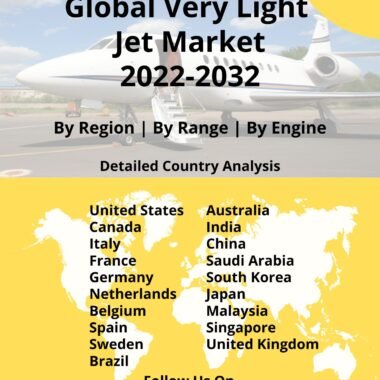Description
Commercial Aviation Avionics Market
Frequently Asked Questions of CA - Avionics Market
Avionics is an electronic system and equipment, which are specially designed for use in aviation. Avionics is a literal blend of the term “aviation” and “electronics”. The avionics installed inside aircraft include various subsystems of flight, including flight management, navigation and surveillance systems, communication, system electronics, electrical and emergency, flight control, and health monitoring systems.
Every modern aircraft, artificial satellite, and spacecraft use electronic systems of varying types to perform the function to fulfill their purpose and mission. Moreover, it also includes autonomous computer control components, which receive input from engine controls and provide output to the flight management systems. The Flight management system has performance, navigation, and aircraft operation computers, which provide virtual information. In the commercial aviation market industry, there is an increase in the need for real-time data and navigation systems. Usually, if the mission is more complex then the electronic system deployed will also be complex.
Major factors driving Commercial Aviation Avionics Market Growth
The Avionics market growth is propelled due to the improved aircraft computing capability. The Aircraft computer system provides integrated cabin electronics solutions, navigation systems, integrated flight controls, simulation and training systems, surveillance systems, and communication systems. The Operational performance of commercial aircraft is improved by all these systems. The capabilities of proline fusion are the combination of information management and flight guidance, advanced flight and touch control of primary flight displays, and performance management. Communication systems are providing data link service with the support of high-frequency (HF) and very high-frequency (VHF) antennae.
A fully automatic landing is enabled using landing sensors. The operation of aircraft performance is improved using integrated flight control, simulation and training systems, and situational awareness and surveillance systems. Air traveling security and safety is increased using an avionics system. Thus, the market growth is fueled by increasing demand for technologically advanced systems. There is growth in the market due to an increase in demand for military aircraft from developing countries such as India and China.
The Rafael is a combat military aircraft developed by the (France) Dassault. Rafael has many operational performances. India signed a contract with the French government to provide 36 Rafael combat aircraft. Then later there was a border issue between India and China. Therefore, the Indian force requested to deliver the Rafael aircraft. The increase in border issues increases the demand for military aircraft. The increase in delivery of military aircraft will increase the demand for the in-built markets. Thus, aiding the market growth.
Trends influencing the Commercial Aviation Avionics Market Size
The integrated avionics improves Commercial aircraft performance and reduces the ECU (Electronic control unit) cost. The product are a combination of next-generation data communication, system-wide information management, automatic dependent surveillance-broadcast, and next-generation network-enabled weather. The integrated product improves the communication, situational awareness, and air traffic management capability of the aircraft.
The development and integration of cutting-edge flight control systems will onboard the next-generation aircraft, which are anticipated to enter service in the coming years; it is being done with the collaboration of avionics makers and aircraft OEMs. Autonomous operations are improved in manned and unmanned aircraft; companies are also concentrating on integrating cutting-edge technology like large data and artificial intelligence into computers. Multiple manufacturers are adding a further layer of cyber security and also creating PUF (Physical unclonable function) based NEMs (Nano-electromechanical switches) that can embrace microwaves, high-dose radiation, and temperatures and in the event of data breaches, self-destructs.
Commercial Aviation Avionics Market Forecast & Dynamics
It is noted that the significant increase in passenger traffic in commercial aircraft will increase the growth of the market expansion. The reason for this is commercial aircraft are in-built with cutting-edge technologies which will improve the passengers’ experience and guarantee travel with security and safety. This will raise the demand for aircraft. For example, Airbus SE delivered 566 commercial aircraft. The advancement in improved and new avionics replaced the older avionics in military aircraft.
These advanced avionics help to satisfy newer-generation battlefield requirements. The avionics system market is impacted heavily by technological advancement. There is a restriction in the market growth due to the high maintenance cost of avionics. High maintenance cost is associated with the replacement of conventional avionics systems. During the flight operation, the aircraft computer system is used which is a complex structure of several systems. To upgrade the system high maintenance cost is required. The factor that hinders the market growth is the necessity to upgrade the system.
Commercial Aviation Avionics Market Analysis for Recent Developments
US Air Force and Lockheed Martin Corporation have signed a contract worth USD 50 Million, to upgrade the advanced avionics suite, which is used to modernize the U-2 combat aircraft’s onboard system. The attacking capacity of aircraft is improved by this technology. Safran was awarded a contract from Pattonair for providing advanced logistical support, which covers a wide range of ventilation products for interior fans and avionics.
The Electra eSTOL (electric Short Take-off and Landing) aircraft has a range of up to 500 nautical miles and can transport 9 passengers or 2,500 pounds of cargo. It has the unique ability to take off and land in less than 150 feet at very slow speeds, thanks to batteries that recharge in-flight, which eliminates the need for new ground infrastructure. The Electra eSTOL aircraft uses distributed electric propulsion, blown lift, and a small turbine-powered generator to power eight electric motors distributed across the wing, resulting in high lift at low airspeed and low drag at high speed. This allows the aircraft to operate cleanly and quietly closer to where people and cargo need to go, providing air connectivity where it previously did not exist.






